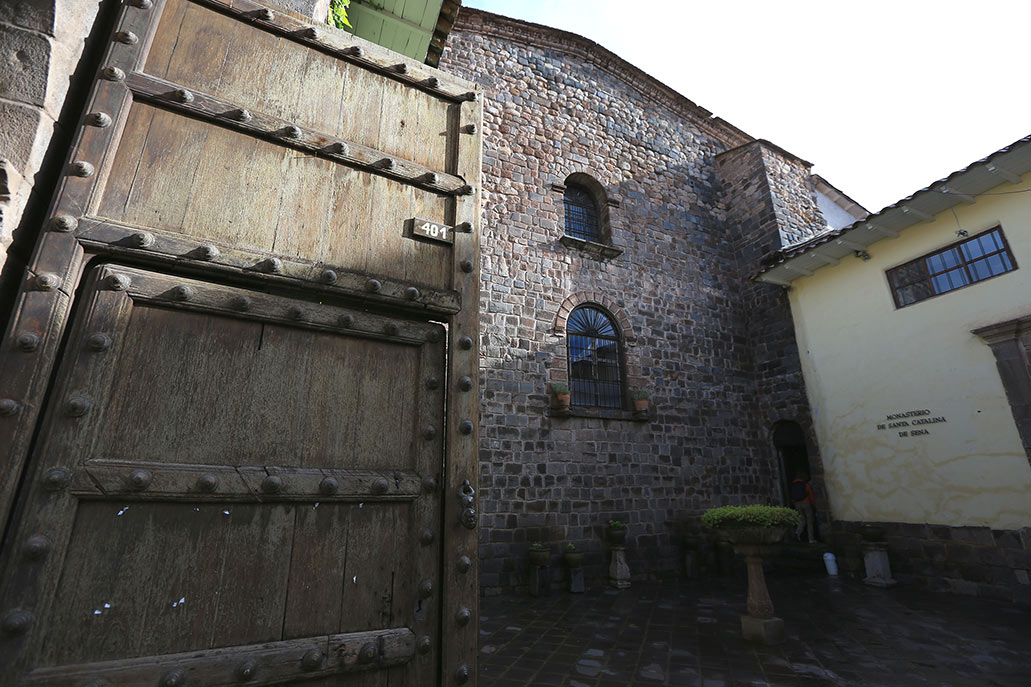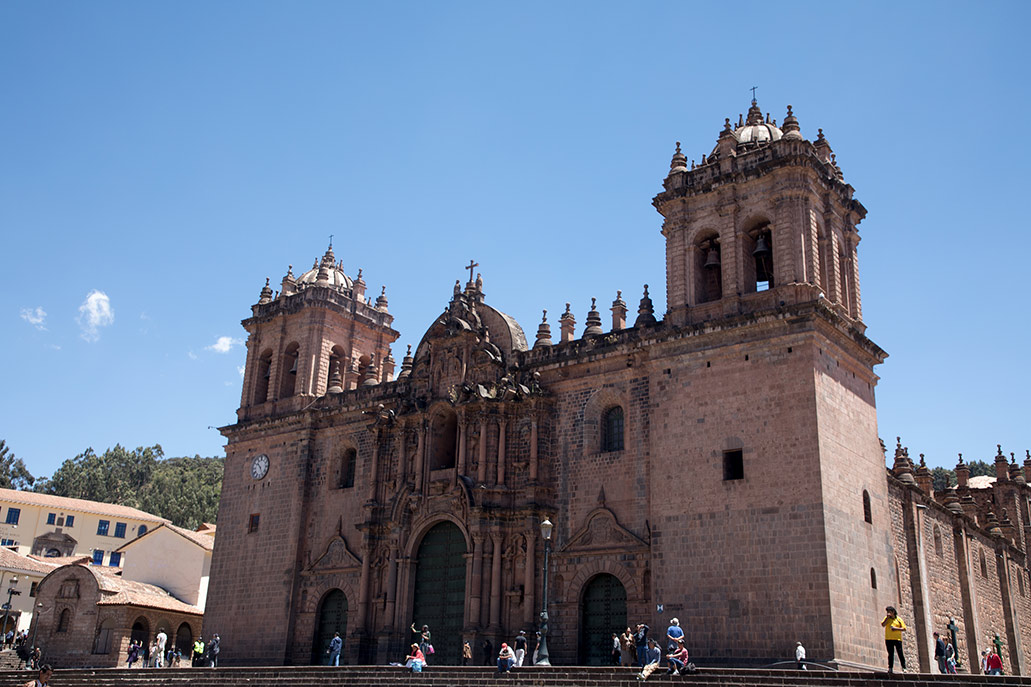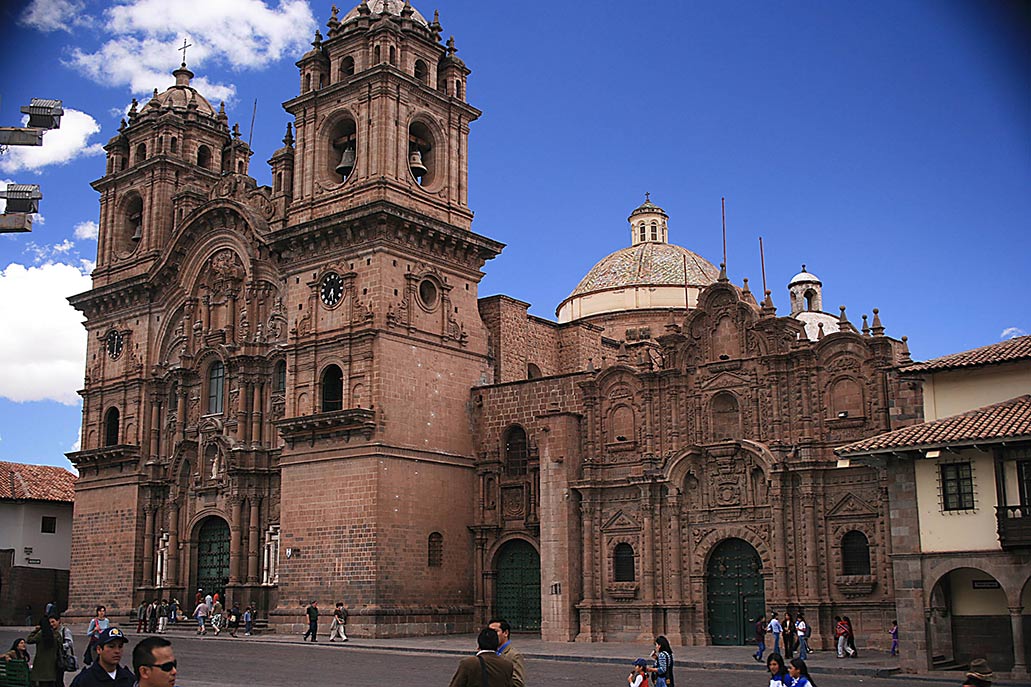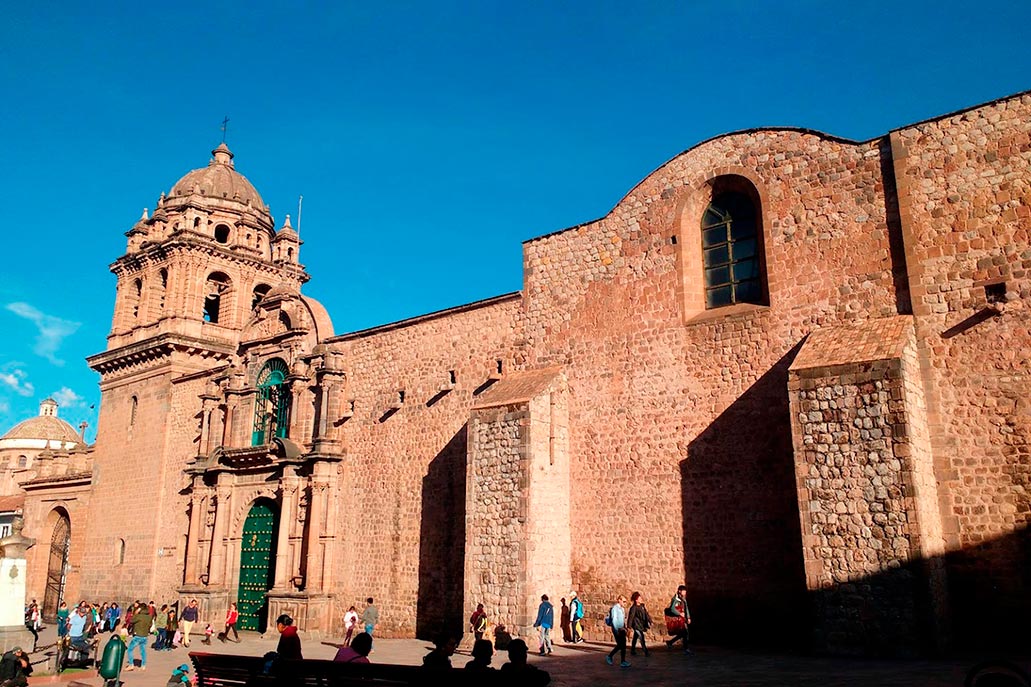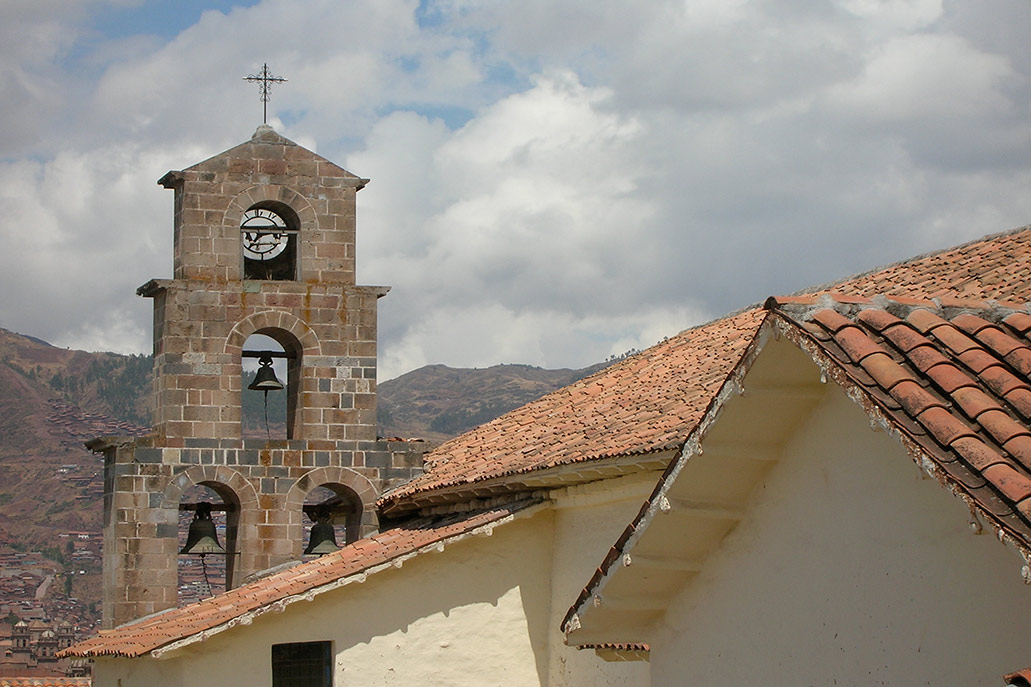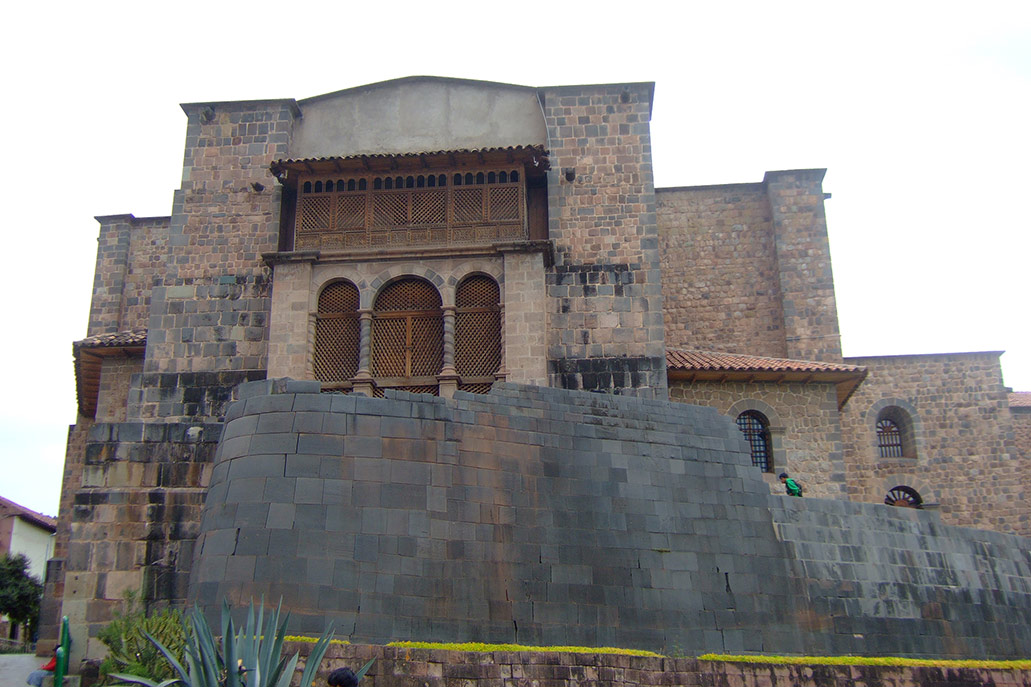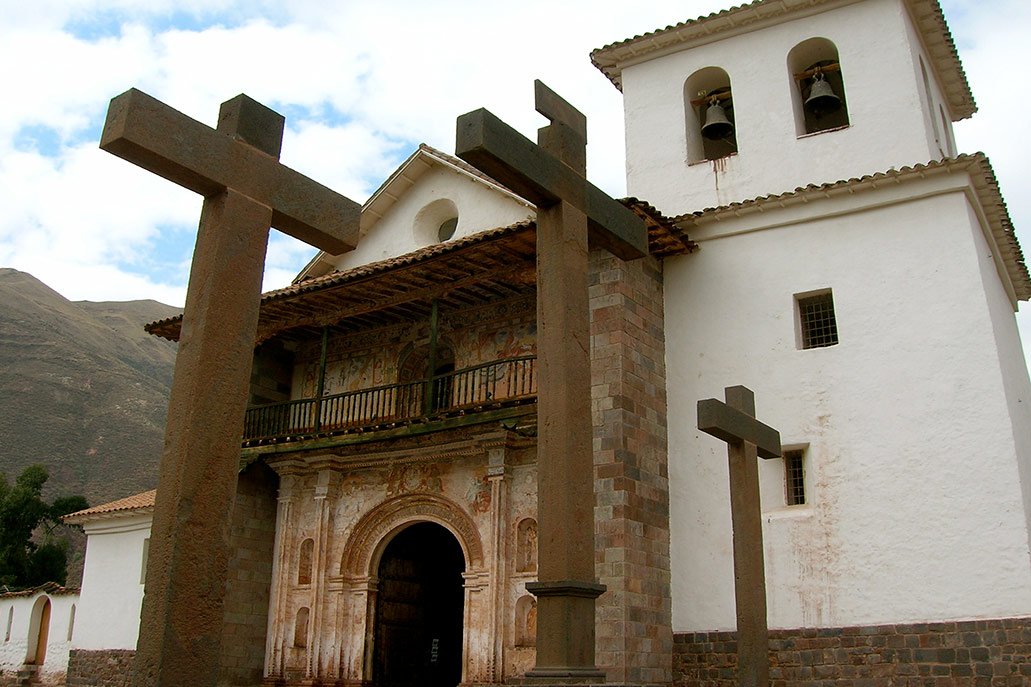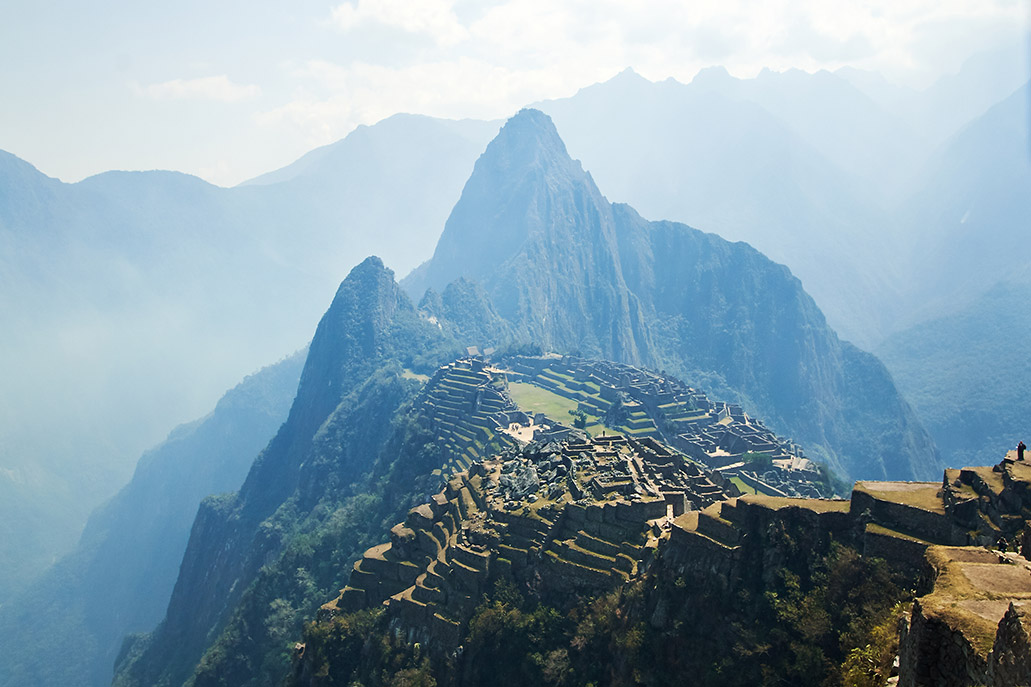The 8 most important religious temples in Cusco
Cusco, according to many tourists, has a mysterious energy. The thing is that, throughout its history, various cultures and civilizations lived there, such as the Marcavalle, the Cotacalle, the Incas or the Spanish. As a result, today you can visit different temples such as the Cathedral, the Temple of San Blas, Machu Picchu and more. Learn which are the most important temples in Cusco, how to visit them, how much it costs and more.
Content
Was Machu Picchu the most important Inca temple? – Despite its great importance, Machu Picchu was not the most important Inca temple. The Inca ‘llaqta’ was actually a citadel of vital importance to demarcate the eastern territories of Tahuantinsuyo. Like every city, there were Inca temples such as the Temple of the Sun or the Main Temple. However, the most important Inca temple was, without a doubt, the Coricancha. There are the thinnest walls. In Inca times, its walls were covered with sheets of gold and silver.
The Cathedral of Cusco
The Cathedral is the most important Christian religious monument in all of Cusco. Its construction dates from 1560 to 1664. That is, it took more than a hundred years to build its three temples: the Cathedral Basilica, the Temple of the Sagrada Familia and the Temple of Triumph. For its construction, the work of several architects was required, such as: Juan Miguel de Veramendi, Miguel Gutiérrez Sencio, Francisco Becerra and Juan Correa.
The Cathedral has a baroque style with mixed Plateresque. On the outside it stands out for its solid figure with two tall towers with bells. However, its great value is its interior treasures where there are: 400 canvases made by Cusco artists in the 17th and 18th centuries. They also stand out for their custody of 27 kilos decorated with diamonds, sapphires, emeralds and more. In addition, there are altars, sculptures, murals and more.
- Where is it?: Plaza de Armas s/n, Cusco.
- How much is admission?: Adults 40 Peruvian soles.
The church of the Company of Jesus
The church of the Company of Jesus, in the Plaza de Armas, is one of the most representative in the city. It is administered by the Jesuits. Its construction dates back to 1575, although it suffered severe damage from the earthquake of 1650. The work was completed in 1670. Its andesite stone walls were built on the temple of Amaru Cancha, former palace of Emperor Huayna Cápac.
Just like the Cathedral of Cusco, the church of the Company of Jesus shows treasures such as the marble carving of the Virgin of the Immaculate Conception. In the central part, an immense altarpiece 21 meters high and 12 meters wide, decorated with cedar and gold leaves. Among his many canvases, one stands out about the marriage of Martín García de Loyola (nephew of Ignatius of Loyola). The canvases are made by prominent artists: Diego de la Puente, Marcos Zapata and Cristo de Burgos.
- Where is it?: Plaza de Armas s/n, Cusco.
- How much is admission?: Adults 16 Peruvian soles.
The church of La Merced
The church of the Order of Mercy is located in the Espinar square, a few steps from the Plaza de Armas. It is famous for its solid baroque style structure. Its construction was carried out between 1548 and 1671 (work was restarted after the earthquake that shook Cusco in 1650). The temple also suffered severe damage in the 1950 earthquake, so its current form was achieved in 1986.
In addition to its beautiful baroque figure, the church has beautiful wood carvings, canvases and murals. However, its great treasure is the custody of 250 grams of solid gold. In addition, it has 1,518 diamonds, 615 pearls and other precious stones that weigh 22 kilos. The church of La Merced receives the Lord of Tremors every Holy Monday, the most important religious figure in Cusco.
- Where is it?: Plaza de Espinar s/n, Cusco.
- How much is admission?<: Adults 15 Peruvian soles.
The temple of San Blas
The temple of San Blas, although small, is one of the oldest and most representative of Cusco. As its name indicates, it is located in the San Blas neighborhood, a historic space. Its construction dates back to 1544, when the Spanish sought to remove the temple of thunder or the god Illapa, one of the most sacred spaces for the Incas. Its architecture is simple: a stone tower and a bell tower.
The interior of the temple of San Blas stands out for its pulpit carved in cedar made in a Chirrigueresque style. This work was made by the sculptor Juan Tomás Tuyro Túpac. According to the chronicles, there and in its surroundings Inca emperors decided to rest after death, such as: Túpac Yupanqui, Huayna Cápac, Huiracocha and even Pachacutec. Today the visit is included in the Religious Circuit Ticket.
- Where is it?: Plaza de San Blas s/n, Cusco.
- How much is admission?: Adults 15 Peruvian soles.
The Monastery of Saint Catalina
The church and monastery of Santa Catalina is one of the most important religious monuments in Cusco as it was built on the foundations of an Acllahuasi, or cloister for the ‘Virgins of the Sun’. That is why its walls have housed women confined to the gods for more than a thousand years. Its construction dates back to 1579 but, like many buildings in Cusco, it suffered severe damage from the earthquake of 1650.
The church today shows a museum where monastic life during the colonial and republican era is exhibited. Its architecture stands out for its vaults, cells, stone walls, stairs and corridors. In addition, it has treasures such as: stalls, altarpieces, pulpits and works from the Cusco school of painting (17th and 18th centuries). The church still houses women secluded in its cloisters for the worship of God.
- Where is it?: Calle Santa Catalina Angosta 401, Cusco.
- How much is admission?: Adults 8 Peruvian soles.
The Coricancha temple
The Coricancha temple was the most important religious site of the Inca era. There they worshiped the Inca gods, especially the sun or god Inti. That is why the most perfect walls were built, some of which were adorned with sheets of gold, silver and precious stones. Today it is a museum and archaeological site, one of the most visited in Cusco.
During the arrival of the Spanish in the 16th century, the Coricancha temple was looted. Its gold and silver treasures were stolen and, on the walls of the Inca temple, the construction of the church and convent of Santo Domingo was ordered. Today both structures, the Inca and the colonial, coexist in a single temple that stands out for its strong Inca walls, its colonial tower and interior treasures such as canvases, chairs, murals, carvings and more.
- Where is it?: Plaza de Santo Domingo s/n, Cusco.
- How much is admission?: Adults 15 Peruvian soles.
The church of Andahuaylillas
The church of San Pedro in the town of Andahuaylillas is known as the ‘Sistine Chapel of America’ for its colorful baroque decoration inside. There you can see, above all, canvases by artists from the ‘Cusco school of painting’ such as: the ‘Crucifixion’ by Angelino Medoro, the ‘Picture of the Virgin of the Rosary’, by Diego Quispe Tito’ and more. It is about 45 kilometers by road from the city of Cusco.
The construction of the Andahuaylillas church dates back to the 16th century. During the colony, efforts were made to evangelize the local residents who worked an important mining site. Its architecture is simple, with a single bell tower and a simple façade. However, its interior decoration is so beautiful that the church is part of the ‘South Valley of Cusco’ tour, which also visits the archaeological site of Tipón and the archaeological site of Piquillacta.
- Where is it?: Main square of Andahuaylillas s/n, Cusco.
- How much is admission?: Adults 15 Peruvian soles.
Machu Picchu
Machu Picchu is, without a doubt, one of the most important religious sites in the world. It was an Inca citadel and center of worship of gods such as the mountains, the moon and the sun. Its construction dates back to 1450 under the orders of Emperor Pachacutec. It is also estimated that the place was visited at least once a year by the Inca emperor, which is why it also served as an enclosure of great importance. Today it is considered one of the 7 Wonders of the modern world.
Machu Picchu is located in the high jungle of Cusco, in the Aguas Calientes district, and about 100 kilometers from Cusco. It has religious buildings such as the Temple of the Sun, the Main Temple, the Temple of the Condor, the Sacred Rock and more. These temples worshiped the sun (Inti), the mountains (Apus) and more. In Machu Picchu, you can also feel an energy that is difficult to explain. This is what many visitors mention. The place is visited by about 1.5 million people a year.
- Where is it?: 10 kilometers from the town of Aguas Calientes in the province of Urubamba, Cusco.
- How much is admission?: Foreign adults 152 soles, Peruvian adults 64 soles.
By Machupicchu Terra – Last updated, October 30, 2023
